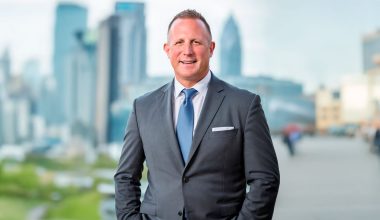Decarbonization and resilience are two sides of the same coin, particularly when it comes to green real estate. Developers, investors, and asset managers face a choice: contribute to the problem or actively shape the solution. And in Alicia Silva Villanueva’s view, those who hesitate risk not only environmental consequences but also lost business opportunities.
“Decarbonization is how you can be part of the solution. Resilience is how you protect the assets you’ve worked with all your life,” says Villanueva, who has spent more than two decades shaping the future of sustainable real estate and guiding the growth of green building practices across Latin America.
A recipient of the U.S. Green Building Council Leadership Award, she often points back to her formative years in Seattle, where exposure to the natural environment deeply influenced her perspective. “Being in a place where nature is in constant contact, you feel more connected to the effect of what you do. That experience grounded me in the belief that sustainability and resilience must be at the core of everything we build.”
As the founder of Revitaliza Consultores, Silva has overseen more than 120 projects aligned with frameworks such as LEED (Leadership in Energy and Environmental Design, focused on energy and resource efficiency), WELL (centered on health and wellness in buildings), and Net Zero (strategies for balancing energy use with renewable generation).
As the impacts of climate change grow more urgent for businesses and communities, the priority is to act decisively—consistent progress in sustainable design carries far more weight than waiting for ideal circumstances. “Ambitious goals create a space of necessity,” Silva says. “That space sparks innovation, and soon the market starts delivering what seemed impossible.”
Why Decarbonization and Resilience Are Business Imperatives
The urgency cannot be overstated. Climate change is already altering market conditions and asset valuations, with research estimating that climate-related damages could wipe out trillions of dollars in real estate value globally by 2050. “The risks of climate change and the risks of the market are changing at a speed we have never seen before,” she says. “We are seeing hurricanes and floods happening at scales that didn’t exist before.”
Silva distills her advice for portfolio leaders into three actionable steps that she believes form the backbone of any serious decarbonization strategy:
- Establish a baseline. “A lot of people don’t want to look at where they are because they almost feel ashamed they haven’t done enough,” she says. “But progress, not perfection, is the goal. Being honest about your starting point is the first key step.”
- Set ambitious goals. Minimum compliance is not enough. “If you only do the minimum, legislation will catch up with you, and you’ll lose market opportunities,” Silva says. Ambitious goals, by contrast, send signals that attract innovation and investment.
- Create a step-by-step path. Long-term targets should be broken into practical, incremental actions. She cites a client managing a stadium that required 250,000 compostable cups per game. At present, no supplier can meet that demand. But by setting a five-year goal and engaging suppliers early, the client is driving the market toward solutions that didn’t exist before.
The Role of Emerging Technologies
Looking ahead, Silva sees technology as a powerful accelerator. Artificial intelligence, digital twins, and predictive analytics will speed up the path to net zero and resilience. “AI is working so fast and the whole ecosystem is transforming so rapidly that solutions will become easier, cheaper, and faster—as long as there is market demand,” she says.
Still, she stresses the irreplaceable role of human expertise. “We will always need subject matter experts, especially in construction,” Silva says. “Technology helps us advance, but we still need people on the ground to walk through buildings, collect data properly, and ensure implementation is real.”
Protecting Value Through Sustainability
Sustainability is no longer a niche—it is central to competitiveness, risk management, and long-term success in real estate. As portfolios navigate mounting climate risks and shifting regulations, sustainability will be the foundation for protecting value.
“This is about building resilience not just for assets, but for the communities and supply chains that depend on them.”
To follow Alicia Silva Villanueva’s work and insights, connect with her on LinkedIn.








